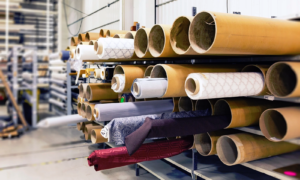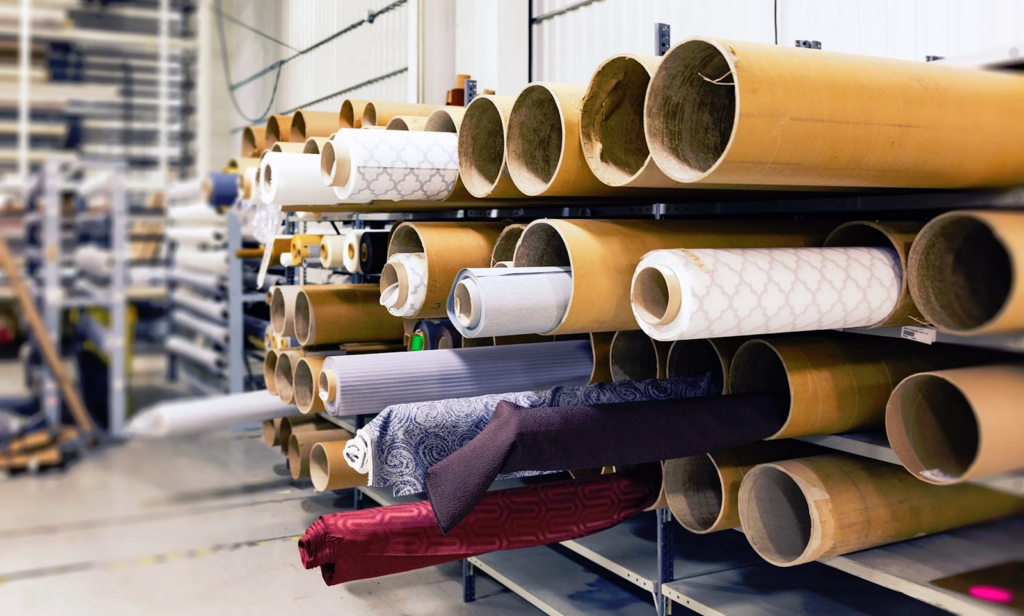

Fashion shows are suspended, catwalks, runways, and ramps are closed, and fashion models are staying at home. Reading this statement you may think that the textile and factic industry has just died because no model is walking on the ramp showing new creations but you are wrong. The trend of fabrics surprisingly has shifted into face masks and sofa! Yes, you heard it right and that is due to the Coronavirus pandemic.
Masks is the number one product needed by all people since March last year while the sale of sofas and couches has been increasing after families are forced to stay at home. This article will show you what fabrics are used in face masks and anything you need to know about sofa fabrics.
I: The best fabrics to use in making face masks according to experts
Containment is still in force and masks remain a rare commodity anywhere for the time being. What are the best materials to make your mask?
Between two free comic book or Manga readings and a batch of bread, you may have already wanted to make your barrier mask against the Covid-19.
The effectiveness of homemade masks varies. It actually depends on the weaving, fibers, and clothing used.
If you’ve already cut out your curtains, sheets, and all your t-shirts, you’ll be pleased to know that a new U.S. study shows which materials are most effective.
There are many tutorials to make your mask yourself, it is important to choose a good cloth so that it is effective. This fabric should filter the air well and be comfortable enough to allow you to breathe well.
A study conducted by Smart Air, a manufacturer of air purifiers, found the top of the best fabrics to make a mask yourself with materials available at home. After testing dozens of clothing materials including brag caps, scarves of various materials, coffee filters, and other bandanas, the company has distinguished several materials for their efficiency and comfort.
Among the best: denim, sheets, paper towels, or canvas! The bra also gets a good test result. These materials have been approved for their filtering power and comfort. And if other materials have been deemed effective, they have not been retained in the top because they are not comfortable to wear and do not allow to breathe well through such as the coffee filter.
Smart-Air also highlighted an important element regarding masks made from old cotton t-shirts, a subject recommended by Cambridge researchers. “Size matters!” warns the company before clarifying that to make this fabric effective and filtering, it is necessary to use several layers and promote a thick cotton t-shirt.
Researchers at the University of Chicago tested several materials and the study was published by the American Chemical Society.
They identified several materials. Combined, they become as effective as an N95 mask under certain conditions.
What is the procedure used to test these fabrics?
To test different materials, the researchers used a spray that produces particles between 10 microns and 6 microns in diameter.
Droplets are carried on tissues to simulate human breathing.
The team measured the number and size of particles in the air before and after passing through the mask.
What are the best fabrics to make a mask?
Researchers at the University of Chicago recommend using a tightly woven layer of cotton with two layers of polyester-spandex comparable to muslin.
The latter can be replaced with silk, flannel, or cotton-polyester cotton wool. The first layer of tightly woven cotton acts as a mechanical barrier that holds the particles and the other two layers form an electrostatic barrier.
According to their results, a mask made of this assembly filters between 80% and 99% of the particles depending on their size.
Beware, this combination must be perfectly adjusted because a 1% gap reduces the filtering efficiency of masks by half or more.
Using a scarf as a mask, a bad idea!
While one may be tempted to simply cover one’s nose and mouth with a scarf, Smart Air’s study states that it has tested the filtering power of three scarves (wool, cashmere, and ramie, a linen-like fabric) with disappointing results, ranked among the worst of all materials tested. These tissues filtered less than 10% of the particles.
II: What about sofas and couches? A big help for people staying at home!
We all love our sofas. Life revolves around them: family reunions, TV evenings with our spouse, and afternoon naps with your dog. That’s why sofas are an important part of our daily lives during this health crisis. Over time, our precious sofa, and more specifically its covering, show signs of wear. To avoid this, choose a high-performance material that can extend the life of your furniture.
Why high-performance fabric?
High-performance fabrics are carefully crafted to be durable and wear-resistant. They were originally designed to withstand the elements. Thanks to technology, we can now enjoy all the benefits of high-performance materials from the comfort of our living room.
Different types of clothing materials are available, from the basic print to the fashionable design collection. There’s something for every taste and every budget. Some of the most well-known brands are Sunbrella, Crypton, and Revolution but other brands are also produced by large textile factories.
Features of high-performance fabrics
Not all high-performance materials are the same. Some properties vary depending on the brand. Here are the most remarkable features of these fabrics:
- Sunlight-resistant: You no longer have to worry about direct sunlight, as the fabric won’t fade. So you can now place your sofa wherever you want in your room.
- Sustainability: The elastic nature of the material makes it ideal for frequent use areas. The material will keep its original softness longer.
- Easy to clean: Spilled liquids or dirt can easily be cleaned with water or common cleaning products.
- Stain-resistant: This is especially important when you think about the possible color replacement.
- Inodorous: Avoid unpleasant odors with encapsulation technology that protects the material.
- Moisture: Technology protects the material from moisture, which can cause the growth of bacteria that can threaten health.
Years pass and sofas may have their share of damages and wear and tear. But there is no reason to mistreat your couch. Choose a good, high-performance fabric to avoid headaches during repairs.

 Explore the dynamic realm of
Explore the dynamic realm of 








